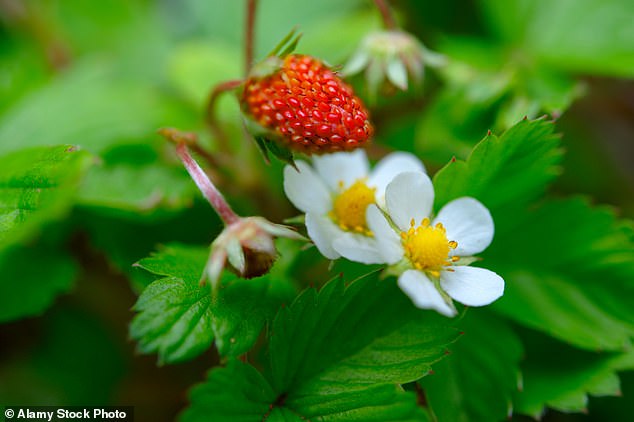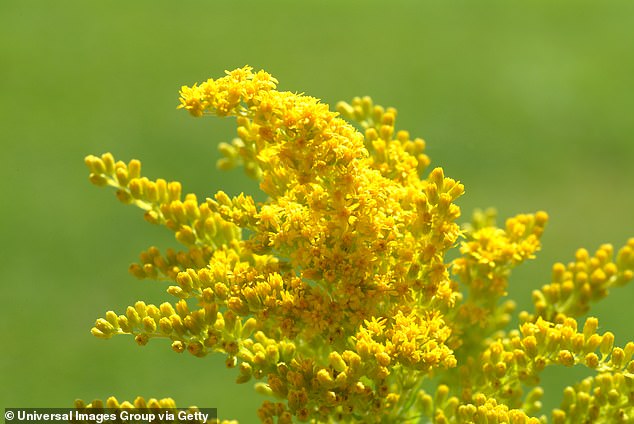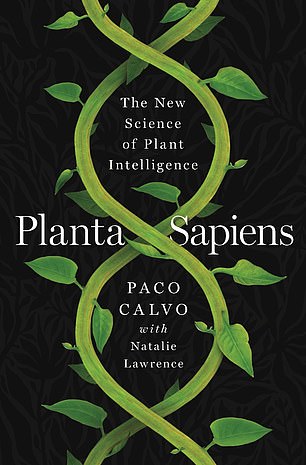Plants have been observed interacting with the environment in ways that scientists say show they are conscious.
Paco Calvo, a professor at the University of Murcia in Spain, has been researching plant intelligence and problem solving for years and discovered that mimosa appears to “learn from experience” when it stops folding.
“In psychology, that is the most basic form of learning,” Calvo told DailyMail.com.
“This pattern of folding, and then not folding, is consistent with the idea that this plant has learned something as a result of experience, not its genes.”
The professor also pointed out that other plants communicate with each other through chemicals, solve problems and even seem to have memories.
Mimosas can also ‘learn’ that a particular touch is safe
Many scientists define intelligence as a central nervous system, where electrical signals transmit messages to other nerves to process information.
Instead, plants have a vascular system, which is a network of cells that transports water, minerals, and nutrients to help them grow.
“We think of plants as resources, as fuel, as oxygen, as textiles, as food, but we do not respect them for themselves,” said Calvo.
‘If we can understand another form of intelligence that does not require a brain, perhaps we can understand what unites us all on the tree of life.
“We need to find the master key.”

Calvo is a professor at the University of Murcia in Spain, where he directs the Minimal Intelligence Lab (MINT Lab).
Some plants appear to “remember” droughts, conserving water more efficiently than plants that have not experienced droughts before, and strawberries can be trained to associate light with patches of nutrients, the professor said.
He went on to explain that plants also learn to synchronize the release of pollen when pollinators such as bees are present.
Researchers have also speculated that plants might be able to count, make decisions, recognize relatives, and even remember events.
The problem is that humans have a self-based understanding of intelligence that focuses on animals with brains and leads us to ignore other possible intelligences and consciousnesses.
‘Our view is that you have to be an animal, otherwise you can’t be intelligent. This is very short-sighted,’ said Calvo.
A recent study at Cornell University found that goldenrods emit a chemical when beetles eat them, tricking the insects into thinking they are damaged and a poor food source; then nearby goldenrods do the same.
Andre Kessler, an environmental chemist and Cornell professor, said: “This would fit our definition of intelligence.

Wild Strawberries Can ‘Learn’ to Associate Light with Patches of Nutrients
“Depending on the information it receives from the environment, the plant changes its standard behavior.”
Calvo is among a growing number of scientists calling for a new understanding of how plants solve problems and communicate, and said the way they do so is in many ways similar to how humans “think,” only without a central brain.
«Plant cells fire voltage spikes in the form of action potentials, just like brain cells. “When you touch the Venus Flytrap trigger twice and it closes, an action potential is produced,” he said.
‘Not having a brain or nervous system doesn’t mean you can’t have electrochemical communication!’
Calvo has also suggested that plants ‘think’ using their vascular system, which is a network of cells that transport water, minerals and nutrients to help them grow.
But it is also used to transmit information, he noted.

A recent study at Cornell University found that goldenrods emit a chemical when beetles eat them, tricking the insects into thinking they are damaged and a poor food source; then nearby goldenrods do the same.
“Not having a brain or nervous system does not mean that you cannot have some form of electrochemical communication,” the professor continued.
“There are electrical signals that travel through the vascular system, so your plant does not simply respond where it has been stimulated, but may respond at the other end of the plant.
“Plants don’t have brains, but they still use electrochemical communication on their own time scale to stay alive.”
Calvo stated that the same neurotransmitters present in the human brain (such as glutamate or GABA) are also present in plants and are sometimes used in the same way.

Paco Calvo maintains that plants are conscious, but in a very different way
“So if you have a plant and you have this caterpillar chewing on the leaf, the plant can use the neurotransmitter glutamate to trigger a wave of calcium that spreads throughout the stem and leaves, creating a defensive chemical weapon to repel the caterpillar.” , he explained. explained.
Calvo said plants have to have a different survival strategy than humans because they are rooted to the soil, so their strategy is “divide and conquer.”
“So if you try to grab or attack an animal, it can fight back,” he explained.
‘In the case of plants, they can’t do any of that, so their strategy is to have everything truly decentralized.
‘If you cut off a branch, another branch will grow. That doesn’t happen to me if you cut off my arm.
Research to understand plant intelligence could be crucial to understanding ourselves and in the battle against climate change.
“We think of plants as resources, as fuel, as oxygen, as textiles, as food, but we do not respect them for themselves,” said Calvo.
‘If we can understand another form of intelligence that does not require a brain, perhaps we can understand what unites us all on the tree of life. We need to find the master key.


